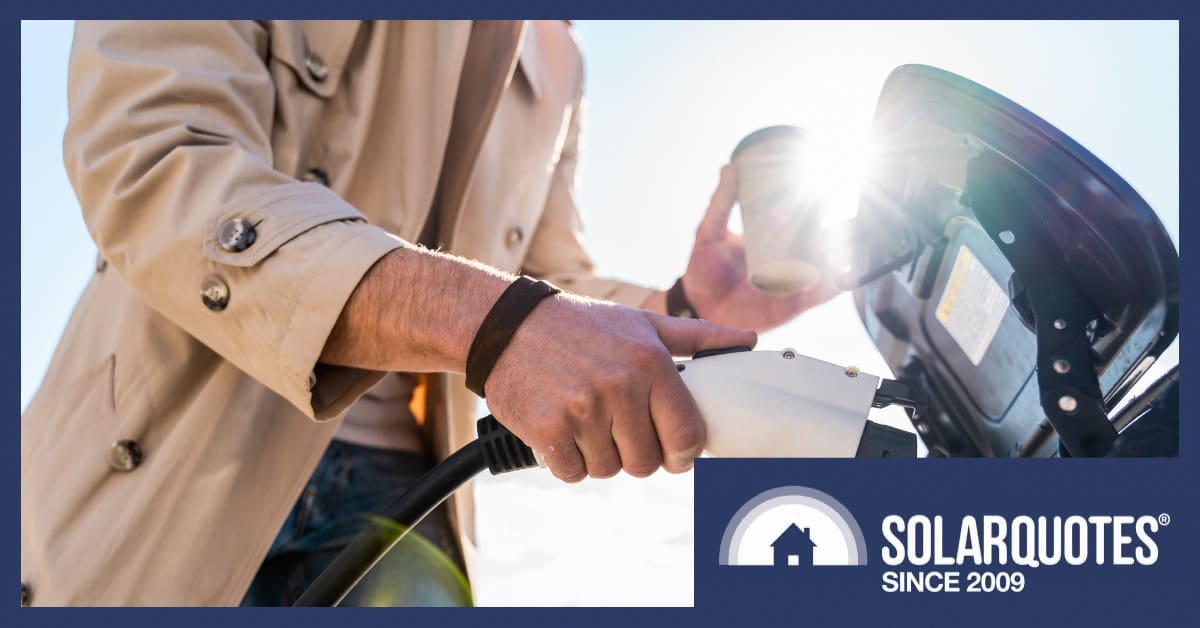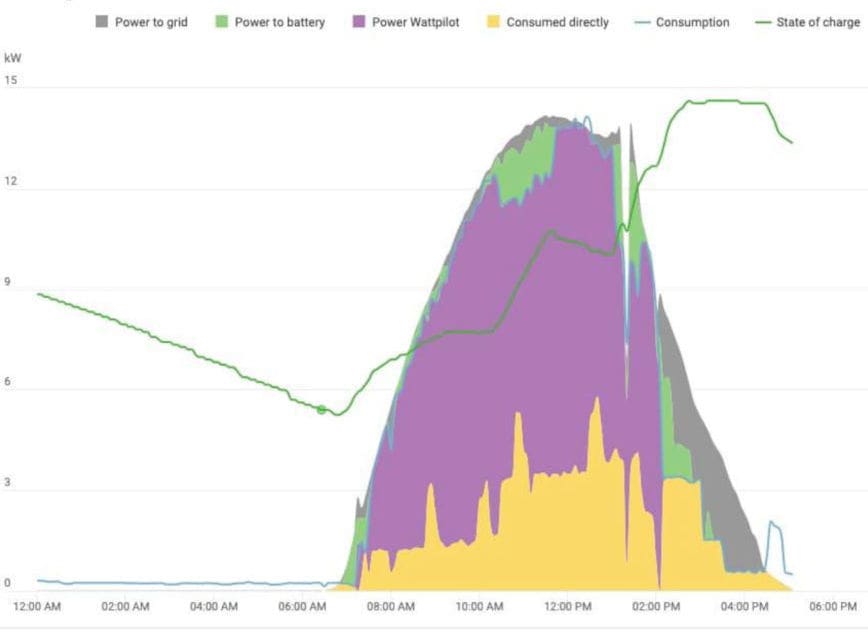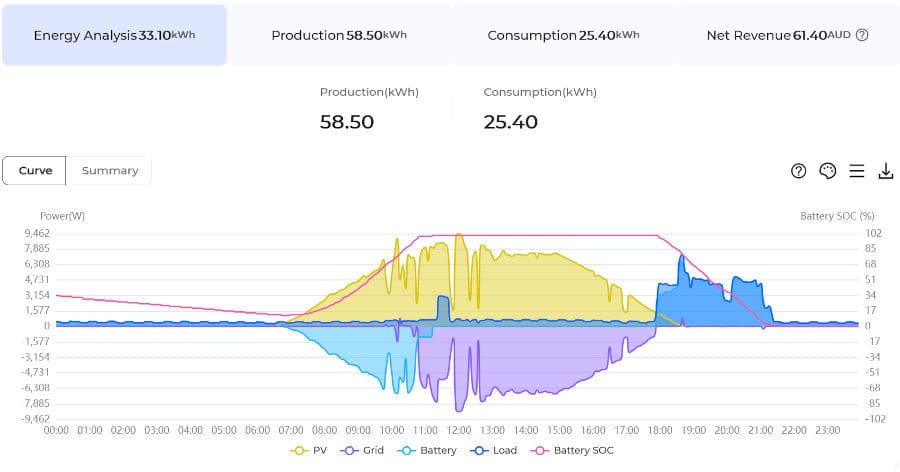
 What if told you there was a petrol station selling half-price petrol?
What if told you there was a petrol station selling half-price petrol?
Forget the dollar figure, just imagine the traffic chaos and thousands of manhours wasted queuing.
Read on and we’ll explain how to get cheap fuel dispensed with zero effort from the convenience of your own driveway… it’s an absolute no brainer.
Of Course We’re Talking About Electric Vehicles
They’re perhaps more accurately described as storage with a steering wheel, transport appliances or passenger batteries.
No matter which way you look at it, EVs are large batteries, they allow you to store free energy AND eliminate your petrol bills.
While compliant, warranted and well-installed home batteries cost around $1000/kWh, a 39kWh Nissan Leaf can be had for $35,000… the battery is cheaper, and you get a free car!
Plus, there’s the fact petrol is hellishly expensive compared to grid electricity as a motor fuel.

In this complex graph we see real time, self consumed solar in yellow, with almost all the solar energy available captured. The bright green is yield stored in a house battery, and purple represents charge to fuel an EV. In both cases these batteries are charged by “smart solar” that follows the inverter output without importing any energy. Only once both these vessels are full of sunshine, does the grey area show export of excess energy to the grid.
Is The Fuel Really Free?
Well yes, more or less. It can depend on how ruthless you are in counting beans but we’ll explore a few figures here using a rough average of 15kWh consumption for 100km travelled.
- A reasonably efficient car burns petrol at 10 litres/100km. By the time that fuel has been shipped halfway across the world it is $1.85/litre. 10 x 1.85 means the fossil industry has consumers well-conditioned to pay $18.50/100km.
- The most expensive electricity dispensed at highway fast chargers can be up to 80c/kWh. However Evie Networks provides very fast 350kW DC charging at 65c per kWh. Highway food might be bad and expensive but road trips are now much cheaper. 15 x 65c equates to $9.75/100km.
- Some slower EV chargers are used as loss leaders to attract customers to a winery for instance. Others like Jolt offer your first 7kWh for free, which is more than half a tank of fuel in my adorably modest EV. However, in traditionally expensive South Australia I’ve recently paid 25c/kWh. So CBD parking may still be a ripoff but charging while you’re at work isn’t. 15 x 25c equates to $3.75/100km.
- If you’re very lucky there are retailers paying 12c/kWh for energy you export to the grid. Forgoing this credit on your account means you “pay” 12c/kWh for storing energy. So at worst, home charging from solar is still less than a tenth of the cost of petrol. 15 x 12c equates to $1.80/100km.
- If you live in Victoria your retailer may be particularly scummy and only offer the mandated minimum 0.04c per kWh. At this point solar yield is almost free energy. 15 x 0.04c equates to 0.6cents/100km.
What About Sunk Costs?
If you invest $1 per watt installed, or $10,000 on a 10kW system, it should yield around 40kWh/day. Over 20 years that yield will have cost about 3½ cents/kWh, which considering inflation, is a lovely steady number.
- So it’s not unreasonable to say home grown energy to fuel your transport needs is 3½c/kWh. 15 x 3.5c equates to 52½cents/100km.
I’m not about to calculate the opportunity cost of missing a perfect ponzi, crypto, stock market investment where I could have better invested my money using 20:20 hindsight, personally I’ve got more interesting grass to watch growing.
However, if you’ve installed a 10kW solar power system which has a fixed 5kW export limit, your yield can be wasted by curtailment.
This is the worst kind of waste, where you’ve paid the money but the energy simply cannot flow to anywhere useful.
If we assume the worst case where your bell curve of potential is reduced to an Uluru of practical execution, there could be 13% of the energy you have paid for up front simply not coming to fruition.
While it’s raining down on your roof, curtailment sees energy pour down the drain. Using storage means you’ve captured truly FREE energy.

To start, the simple way to explain what I call a sunshine circuit is simply to turn on a load when your solar has ramped up to a certain yield. Solar diversion is the common terminology, because you take electricty destined for export to the grid and divert it into your own storage or consumption.
Storing Solar Energy Will Save You Thousands
They say planting trees is best done 20 years ago, so you’d best start digging today.
As batteries are many times cheaper now than they were 20 years ago, storing solar electricity is increasingly viable economically.
We aren’t talking about seasonal duration, like a tank of heating oil or a tonne of wood for your combustion stove. Rather it’s a shift in mindset, a matter of gathering fresh energy every day and using it over the next night or two.

Here we see light blue turns to purple once the battery (represented by the pink line) is full. The major consumption of stored energy runs 6pm till 9:30pm. Next day we do it again.
It’s Time We Got Smart
When there’s abundant sunshine, then really, there’s no problem. Having lots of electricity available is a feature, “wasting” it with mid-summer curtailment is not a bug.
What we need is clever ways to generate and store energy when conditions aren’t so generous.
That’s why efficiency will always be king, especially in a long overcast week of winter. Insulation, double glazing, thermal mass, automation & clever design will pay huge dividends economically.
What’s harder for the accountants to quantify though, is comfort. Going home to a place you find relaxing improves outlook, lifts productivity & lowers anxiety.
As does slashing your electricity and fuel bills, in any case. To turn your home into a giant storehouse of free sunshine read our guides on solar panels, batteries and EV chargers.
Note: the original version of this article wrongly described Victoria’s minimum mandated FiT as four tenths of a cent, when it is actually 0.04c, not 0.4c. Apologies, and thanks to Les in the comments for the correction.
Related






